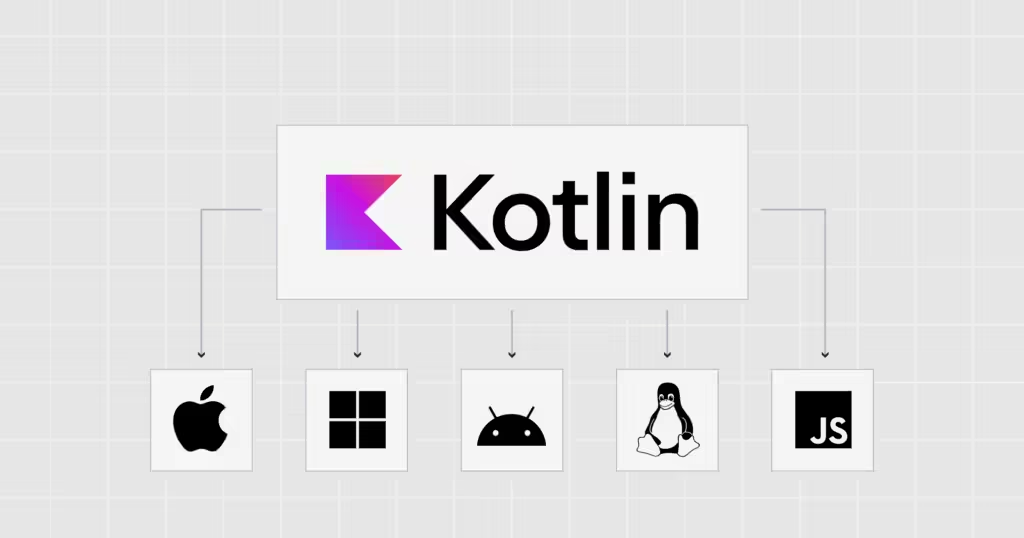As we move into 2024, Kotlin Multiplatform (KMP) continues to revolutionize the cross-platform development landscape. By allowing developers to write common business logic once and share it across iOS, Android, and other platforms, KMP is fast becoming a top choice for building efficient, maintainable apps. In this post, we’ll explore why Kotlin Multiplatform is a game-changer for developers and how you can harness its power to deliver seamless cross-platform applications.
Why Kotlin Multiplatform?
Kotlin Multiplatform addresses one of the biggest pain points for developers: platform-specific code. In the past, building apps for multiple platforms required writing and maintaining separate codebases, leading to inefficiencies and higher costs. KMP solves this by enabling code sharing across platforms, particularly in core logic such as data handling, networking, and business logic, while allowing developers to write platform-specific code only where needed, like in UI layers.
For example, if you’re building an app that needs to work on iOS, Android, and the web, Kotlin Multiplatform lets you reuse significant portions of your codebase, reducing duplication and speeding up development.
Key Features of Kotlin Multiplatform in 2024
1. Improved Interoperability
Kotlin Multiplatform offers smooth integration with platform-specific APIs. Whether you’re working with Swift for iOS, Java for Android, or JavaScript for the web, Kotlin makes the process of sharing code across platforms easier than ever before.
2. Increased Stability and Performance
As KMP continues to mature, the stability and performance of cross-platform apps have dramatically improved. In 2024, developers can rely on a more robust ecosystem with better tools and libraries, making it a more viable choice for production apps.
3. Streamlined Dependency Management
Kotlin’s integration with popular build systems, such as Gradle, has simplified dependency management. This allows developers to manage dependencies in one place, streamlining the process of including libraries across platforms.

How to Leverage Kotlin Multiplatform
To unlock the full potential of Kotlin Multiplatform, follow these best practices:
1. Structure Your Code Properly
When building a Kotlin Multiplatform project, it’s crucial to keep your shared logic in a common module, while platform-specific code (such as UI logic) resides in separate modules. This allows you to maximize code sharing without compromising on platform-specific features.
2. Use Existing Libraries
Kotlin Multiplatform has gained tremendous community support, leading to the development of a rich set of libraries compatible with KMP. Make use of popular libraries like Ktor for networking, SQLDelight for database management, and Koin for dependency injection to accelerate development.
3. Optimize for Performance
While KMP offers an efficient way to share code, it’s important to monitor the performance of your app. Profiling tools available in Kotlin Multiplatform allow you to optimize your code for both Android and iOS, ensuring that your app performs seamlessly across all platforms.
Case Studies: Kotlin Multiplatform in Action
Several major companies are already leveraging Kotlin Multiplatform in their development workflows. For instance, Netflix uses KMP to share business logic across its mobile and TV platforms, resulting in faster development cycles and reduced maintenance costs. Similarly, VMware has adopted Kotlin Multiplatform to streamline its development of enterprise-grade mobile applications.
The Future of Kotlin Multiplatform
In 2024, we can expect Kotlin Multiplatform to continue evolving, with more tools and frameworks being introduced to further simplify cross-platform development. With increased community support and regular updates from JetBrains, the platform is positioned to be a key player in the cross-platform development space.
Developers looking to future-proof their apps should consider adopting Kotlin Multiplatform as part of their development strategy. By leveraging its flexibility and power, you can build apps that not only run seamlessly across multiple platforms but also provide a consistent user experience.
Conclusion
Kotlin Multiplatform in 2024 is shaping the future of cross-platform development by allowing developers to write and maintain less code while delivering high-performance apps. Whether you’re targeting Android, iOS, or other platforms, KMP enables you to unlock seamless development workflows and maximize efficiency. As the demand for cross-platform apps continues to rise, Kotlin Multiplatform is undoubtedly a key technology that developers should embrace.

